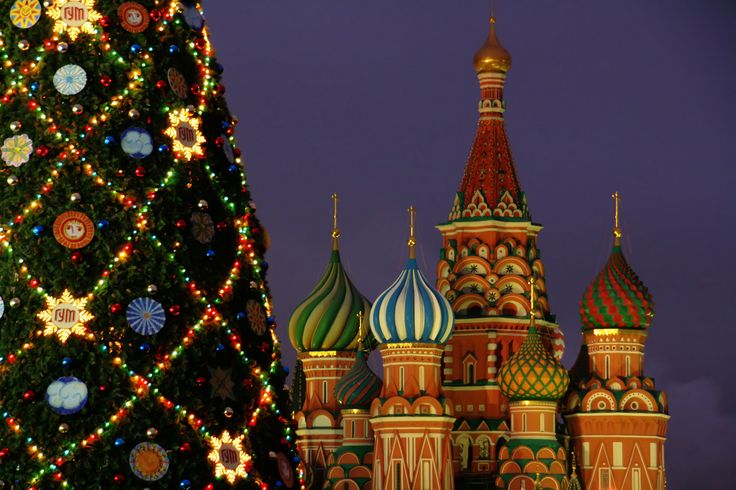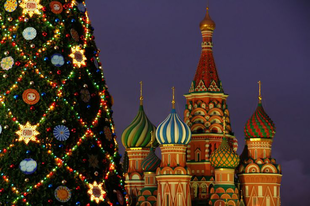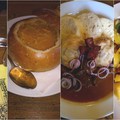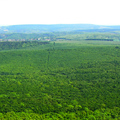For English please scroll down
A karácsony az ortodox hagyományok és a Julianus-naptár szerint nem decemberben, hanem az újesztendőben van. Oroszországban a Szocselnyik-et, vagyis a szentestét az ortodox hívők január 6-án ünneplik, melyet egy hónapos böjt előz meg. Forrás/Source: http://hu.pinterest.com/
Forrás/Source: http://hu.pinterest.com/
Az ortodox karácsony leglátványosabb eseménye a száraz tölgyágak meggyújtása. A hagyomány szerint a nagyapa fiával és unokájával karácsony böjtjének reggelén kimegy az erdőbe tölgyágat vágni. Eredetileg mindenki otthon, a saját udvarában égette el az ágakat, ma már azonban a városok főterén gyűlnek össze az emberek, és a magukkal vitt száraz ágat vetik a nagy közös tűzre. Karácsonykor az ortodox vallásúak nem dolgoznak, nem kérnek, és nem adnak kölcsön. Vendégségbe sem mennek, csak karácsony másnapján.
Az általános jellemzőkön túl a gyakorlati tapasztalatokról a félig belorusz származású Lajossal beszélgettünk.
Hogyan lehetne definiálni az alapvető különbségeket a katolikus és az ortodox karácsonyi szokások között?
Először is fontos tisztázni, hogy a görögkeletiek és a pravoszlávok különböznek egymástól, abban azonban közösek a hagyományaik, hogy mindkét vallás a Julianus-naptárt használja, így az ünnepeik is ehhez igazodnak. Érdekesség viszont, hogy az ortodox egyházhoz tartozók rendszerint megünneplik a katolikus karácsonyt is (bár nem olyan mélységben, mint a sajátjukat). December 24-én inkább a barátokat hívják át, január 6-án pedig a család ünnepel. December 31-én állítják fel a karácsonyfát, január 13-án ünneplik a szilvesztert.
A vallási szertatások miben különböznek egymástól?
A pravoszláv karácsonyban nincsenek külsőségek; az ünnep lényege maga a mise, amit böjt előz meg. A karácsonyi böjt engedményesebb: ilyenkor csak a húst kell elhagyni, húsvétkor azonban a tejtermékeket is. A mise elég hosszú, általában hat órán keresztül tart, amit illik végigállni. Furcsa módon, ha a hívők böjtölnek a misét megelőző időszakban, akkor könnyebb végigállni a szertartást. A mise hasonló liturgiájú, mint a katolikus, itt azonban több az ének; a gyermekek már egészen kicsi koruktól kezdve kórusban énekelnek. A szertartáson ténylegesen át lehet szellemülni, igazi katartikus élményt tud nyújtani.
A karácsony egyik meghatározó ismertetőjele a családi együtt-étkezés. Ennek van valami különleges hagyománya nálatok?
Igen, a karácsonyi étkezés fontos az ortodoxoknál, 12 fogásos menüt eszünk végig. A családi vacsora azonban nem csak karácsonykor jellemző, hanem az év bármely szakában.
Milyen ételeket szoktatok enni?
Leves nem kifejezetten jellemző, inkább egytálételeket fogyasztunk. Az ortodox étkezési szokásokra jellemző, hogy a különböző fogások egyszerre kerülnek az asztalra: sok apró falatka és sok kis adag van a tálakon. Kistányérok vannak kikészítve, mert a nagy tányér nem fér el az asztalon, viszont így több mindenből tudsz kóstolni. Gyakran eszünk füstölt csirkecombot karácsonykor, és nem ritka a töltött káposzta sem. Ahol disznót tartanak, ott jellegzetes ételnek számít a kocsonya is. Nincsen konkrét karácsonyi menü, de roskadásig telt az asztal, és a választék elsősorban azt tükrözi vissza, hogy az adott család milyen ételeket szeret. Ha néhány jellemző ételt, vagy alapanyagot kellene említeni, akkor a hal kihagyhatatlan, illetve a padlizsán majonézzel. Jellegzetes étel még a pelmenyi, ami egy húsos főtt tészta, illetve a pirog is, ami krumplival vagy zöldséggel töltött kelt tészta. Desszertként gyakori a füstölt alma.
Köszönjük az interjút!
Szintén most ünnepli a karácsonyt a jeruzsálemi görögkeleti egyház és a kopt keresztények Egyiptomban, ahol a lakosság csaknem tíz százaléka, mintegy nyolcmillió ember vallja magát kereszténynek.
***
According to the Orthodox traditions and the Julian-calendar, the Orthodox Christmas takes place in the new year instead of December. In Russia, Christmas Eve or Szocselnyik is celebrated on 6th January.
The most spectacular event of the Orthodox Christmas is the burning of the dry oak branches. According to the tradition, the grandfather and his son and grandson go out into the woods in the morning of Christmas Eve to cut the oak branches. Initially, everybody burned the branches at home in their yard, but today people concentrate on gathering around a huge common fire in the main square of the city and burn the branches together. At Christmas the Orthodox do not work , do not borrow and do not lend.
Beyond general characteristics, we asked the half Belarus Lajos about practical experiences of the Orthodox Christmas’ traditions.
How can you define the basic difference between the Catholic and Orthodox Christmas traditions?
First of all, it is important to clarify that the Greek Orthodox and Orthodox are different from each other, but they are similar in using the Julian-calendar and their holidays fit to it. However this is an interesting tradition: Orthodox celebrate the Catholic Christmas as well, but not as deep as their own Christmas. Instead, they invite friends on 24th December, and the family celebrate on 6th January. They set the Christmas tree up on 31st December and celebrate New Year’s Eve on 13th January.
What is the difference between the religious ceremonies?
There are no exceptional differences in the Orthodox Christmas: they fast and the essence of the celebration is the Mass. They prepare for it, they consider Christmas primarily a religious holiday. Mass takes 6 hours in general and in a strange way, if they fast before Christmas, they can stand the whole ceremony more easily. The Mass has similar liturgy to the Catholic one, but there is more singing: children sing in a choir from an early age. The ceremony could provide a real Cathartic experience.
One of the most established attributes of Christmas is the family dinner. Is there any special attribute according to the Orthodox traditions?
Christmas dinner is extremely important for us: we prepare a 12-course menu. Although this custom is not specific only at Christmas time, but at meals within the family circle in general.
What kind of meals do you eat?
Soup is not really specific as we eat other appetisers. For the Orthodox meal, it is very traditional that several courses are served at the same time on the table. These dishes comply of many small bites. Plates are small in order to conserve space. Orthodox often eat smoked chicken and stuffed cabbage is also not uncommon. Where pigs are kept on the establishment, then jelly is also common meal. There is nothing concretely special regarding the Christmas menu, but the table is full and the dishes reflect the different family tradition. If we have to speak about some traditional Orthodox dishes or commodities, then fish cannot be missed or the aubergine with mayonnaise. Pelmeni is a special meal, which is a pasta stuffed with meat and pirog which is similar to pelmeni, but it contains rather potato and vegetable. For dessert, the smoked apple is most common.
Thank you Lajos!
The Greek Orthodox in Jerusalem and the Coptic Christians in Egypt also celebrate Christmas now, where nearly ten percent of the population, eight million people consider themselves Christian.






